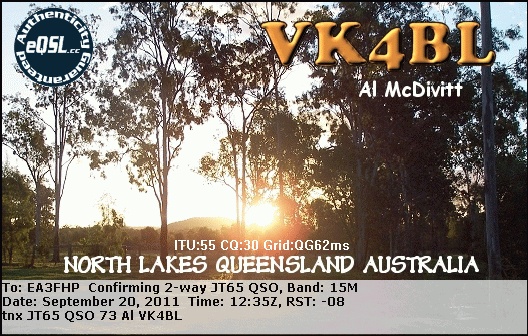Norm WA0JYD writes, “Here’s some details on those sunspot numbers.” Norm’s friend Don WB0VGB has been in contact with Australian writer Al VK4BL to glean a glimpse into sunspot impact on radio, and what it means when there’s no sunspots atall.
Part I: The Sun Spots you requested from wb0vgb
What Does the Solar Flux Index Mean?
The SFI number is the number of solar flares
Solar flux is measured in solar flux units (SFUs). It is the amount of radio noise or flux emitted at a frequency of 2800 MHz (10.7 cm, hence is it also called the 10.7 cm flux index).
A and K INDEX
When talking about the solar cycle the numbers are based on ‘smoothed’ numbers, this means the monthly average rather than the figures for each day. Using ‘smoothed’ numbers gives more accurate results, daily solar activity varies dramatically, making accurate results difficult. A and K INDEX are measurements of the magnetic field activity that are used in predictions.
The K index is a reading of the magnetic activity as compared to a ‘quiet’ day made from various locations. This index in the range 0-9. The K index is the average of of these readings.
K = 0 Inactive
K = 1 Very quiet
K = 2 Quiet
K = 3 Unsettled
K = 4 Active
K = 5 Minor storm
K = 6 Major storm
K = 7 Severe storm
K = 8 Very severe storm
K = 9 Extremely severe storm
The A index relates to geomagnetic stability and is calculated from K indices for the previous day.
A = 0 – 7 Quiet
A = 8 – 15 Unsettled
A = 16 – 29 Active
A = 30 – 49 Minor storm
A = 50 – 99 Major storm
A = 100 – 400 Severe storm
A quick example of the A & K numbers
Say we are waiting for excellent conditions on the HF bands, then we are looking A and K indices of 0 lasting for a few days. Combined with a SFI (above 250). This can get all messed up by various random things happening on the sun, with these numbers you would be having a good time on HF.
If your interests are the lower HF bands, low A and K indices with very low SFI numbers would be the go.
In the real world generally propagation conditions are OK when the A index is 10 or lower, and the K index is 3 or lower and the SFI above 90. But remember lots of hams (Some like me using compromised antennas and low power) worked very good DX, added new DXCC entities to our logs, made new friends and had lots of fun. All at the bottom of the last solar cycle, when the numbers were terrible. So don’t let understanding the numbers stop you from getting on the radio. There are countless stories about surprises on supposedly dead bands.
Cheat notes (for the non readers)
The A index [ LOW is GOOD ]
· 1 to 6 best
· 7 to 9 is OK
· 11 or more not so good
K index [ LOW is GOOD ]
· 0 or 1 best
· 2 is OK
· 3 or more not so good
· 5 is really terrible
SFI index [ HIGH is GOOD ]
· 70 not good
· 80 good
· 90 better
· 100+ best
Thanks to AL (VK4BL)

Part I credit to Al WK4BL, Norm WA0JYD, WB0VGB
And now, Part II: What is propagation like when there are no sunspots?
According to a NASA report, we may be in for a century-long absence of sunspots and a rise in colder climates. The number of sunspots during the peak year, called sunspot maximum, can vary from as few as 50 to as many as 260. Prior to the current sunspot cycle (Number 24), which spans the years 2008-2019, NASA astronomer Dean Pesnell collected 105 forecasts for Cycle 24. The actual number at the 2014 peak was 116.
The current sunspot cycle is scheduled to draw to a close about 11 years after the previous sunspot minimum in January 2008, which means sometime in 2019. It has been a disappointing cycle for many amateur radio operators. Moreover, the news gets worse as NASA reports some studies show sunspot magnetic field strengths have been declining since 2000 and are already close to the minimum needed to sustain sunspots on the solar surface.
The good news is that radio activity continues in the absence of significant sunspot existence. A ham operator, RJ Blane, was quoted as saying, “HF bands seem to open miraculously during contests, only to appear to close again afterwards, as everyone who would normally be on HF tries their hand at gardening or similar.”
Think about it, because there is a lot of truth in that statement.
HF bands will continue to open on a regular basis 20-meters and blow. The E-layer gives us less predictable but many opportunities to make great contacts on 10 and 6. Summer conditions open up VHF on a regular basis. It might not be like shooting fish in a barrel, but if you are willing to put in the work, you will have no trouble making contacts.
Also remember the official daily and monthly sunspot numbers are determined by the World Data Center – Sunspot Index and Long-term Solar Observations (WDC-SILSO) at the Royal Observatory of Belgium. Generally, sunspot reports from observatories calculate sunspot numbers whereby each sunspot group counts as 10, and every umbra within each spot group is individually considered as 1. Therefore, no sunspots on the visible Sun would be considered as zero; while the next possible number can only be 11 or higher.
Source: NASA
SWIARC Club Member Contribution. Special thanks to Norm WA0JYD for sharing this information with us and providing us with sunspot and propagation reports during some of the popular local radio nets.
